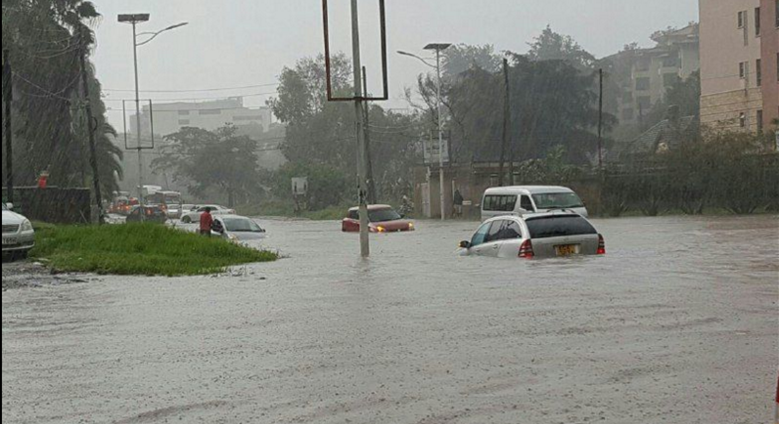The Meteorological Department has announced a forecast indicating a continuation of rainfall across various regions this week. However, a decrease in rainfall intensity is expected later in the week, with heavy downpours likely in specific areas during the initial phase.
According to projections covering the period from May 7 to May 13, heavy rain is anticipated to persist in the Highlands East and West of the Rift Valley, the Lake Victoria Basin, and the Rift Valley during the first half of the week.
Nevertheless, the department foresees a reduction in rain intensity across the country during the latter part of the week.
In the Highlands West of the Rift Valley, the Lake Victoria Basin, and the Rift Valley, morning rains are forecasted over a few places early in the week.
Meteorological Services Director, David Gikungu, stated, “Afternoon and night showers and thunderstorms are expected over several places during the first half of the forecast period reducing to a few places thereafter.”
Morning rains, along with afternoon and night showers, and thunderstorms, are expected over a few places in the North-western Kenya region early in the week, followed by sunny intervals.
Morning rains are expected over a few places in the Highlands East of the Rift Valley during the first half of the week.
Afternoon and night showers, along with thunderstorms, are anticipated over several places during the initial phase, reducing to only a few places thereafter.
In North-eastern Kenya, morning rains followed by afternoon and night showers, and thunderstorms are forecasted over a few places during the first half of the period, followed by sunny intervals.
Morning rains, afternoon and night showers, and thunderstorms are expected over a few places in the south-eastern lowlands during the initial phase of the week, with sunny intervals anticipated for the rest of the week.
In the Coast region, afternoon and night showers are expected over a few places, occasionally spreading to several places.
The Meteorological Department has cautioned about the ongoing risk of flooding in low-lying areas, flood plains, and urban areas with poor drainage.
Dr. Gikungu advised, “Those living within flood plains should remain alert as flood waters may appear in the absence of rain.”
Additionally, landslides are likely to occur on steep slopes where soils become saturated, while heavy rainfall may be accompanied by strong winds, thunder, and lightning.
“The public is advised to avoid sheltering under trees and metallic structures to minimize exposure to lightning strikes. They are also advised to be cautious since the forecast strong winds may damage roofs, trees, billboards, etc.,” emphasized the weather department.
Temperature-wise, high average daytime temperatures of over 30°C are expected in most parts of the Coast, North-eastern, and North-western Kenya regions, while low average night-time temperatures of less than 10°C are projected in some parts of the Central Highlands.
The death toll from flooding and other impacts of the heavy rains that have hit Kenya since March rose to 228 on Sunday, according to the Interior Ministry, with over 164 people injured and 212,630 displaced.

